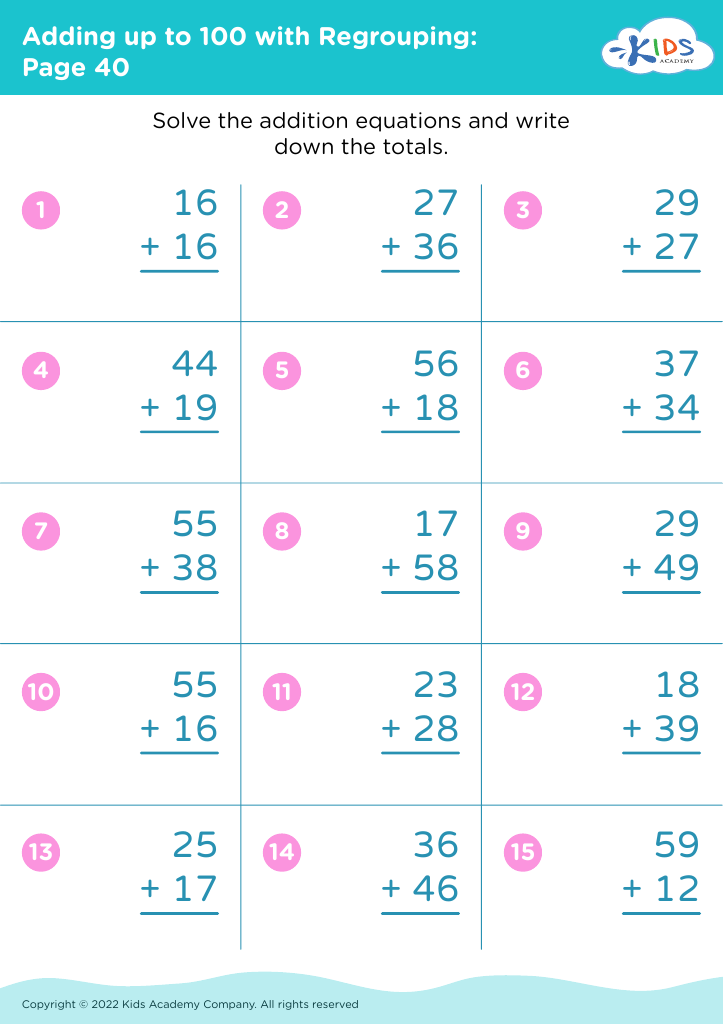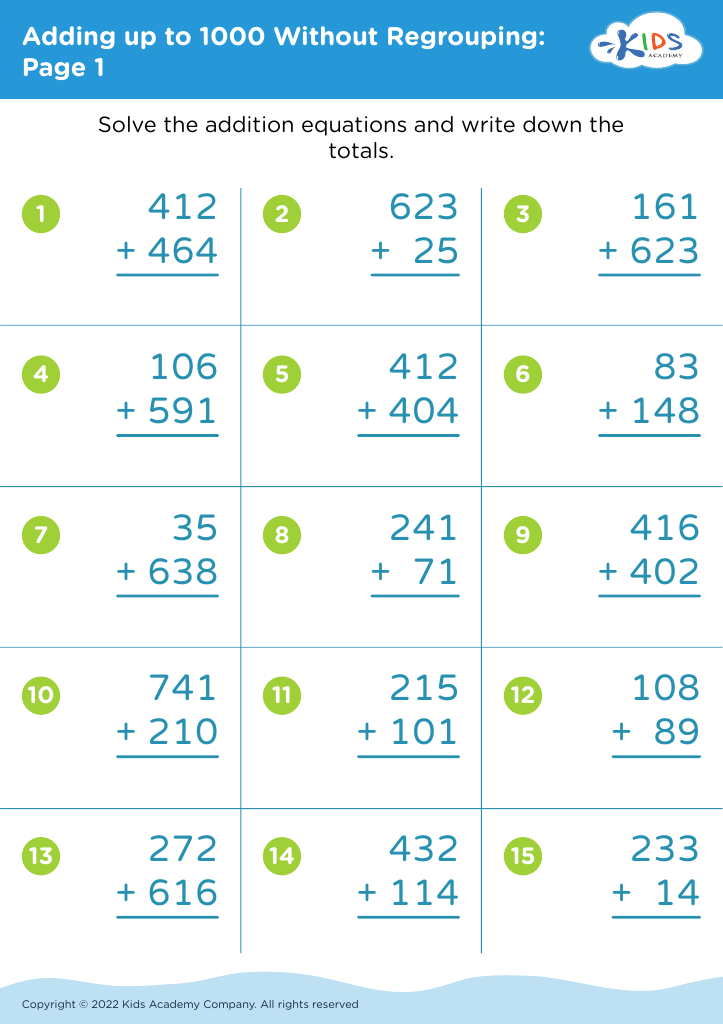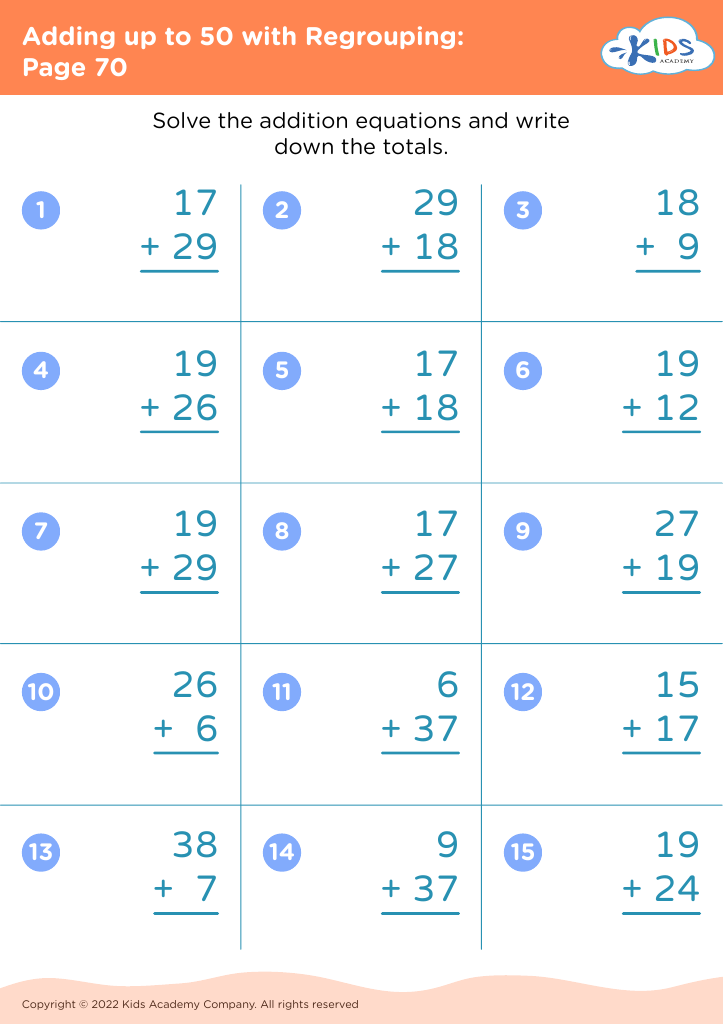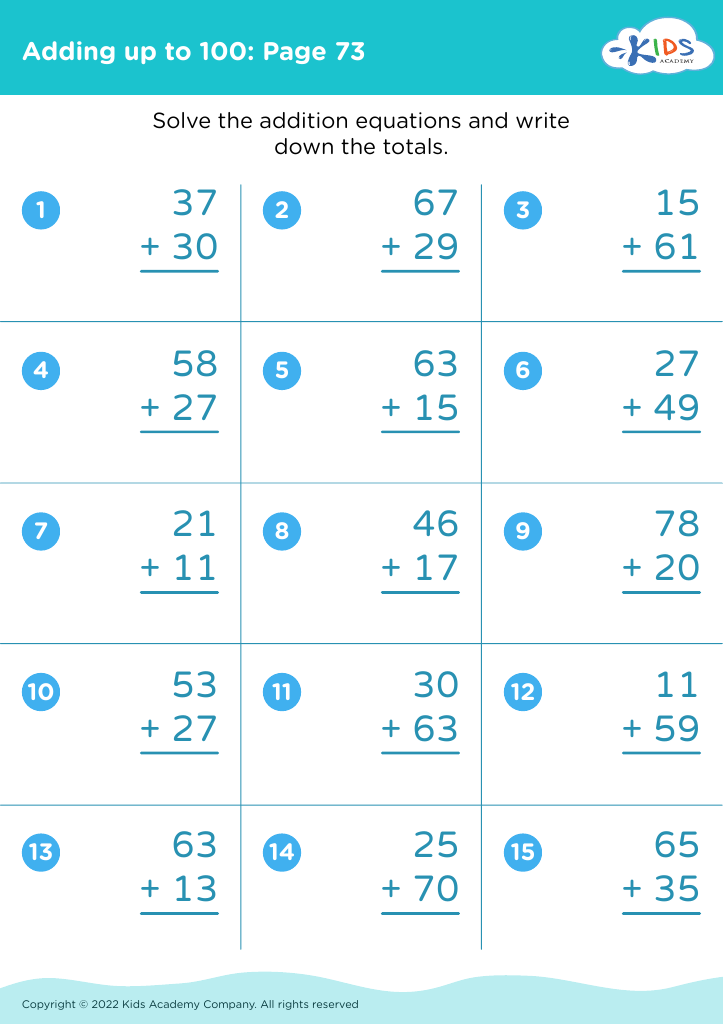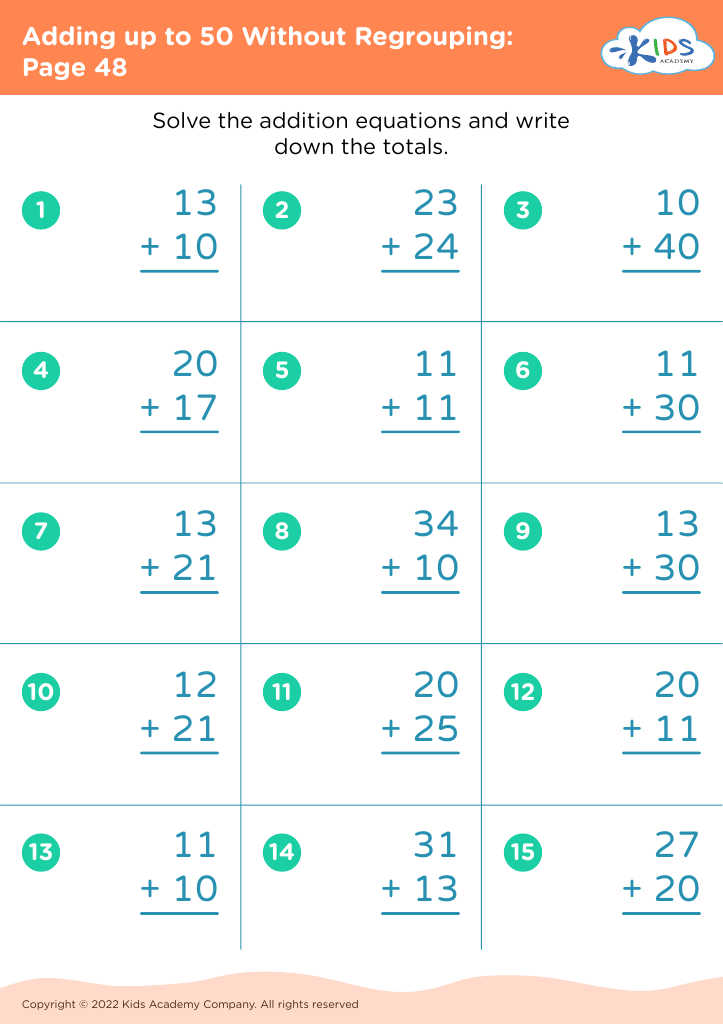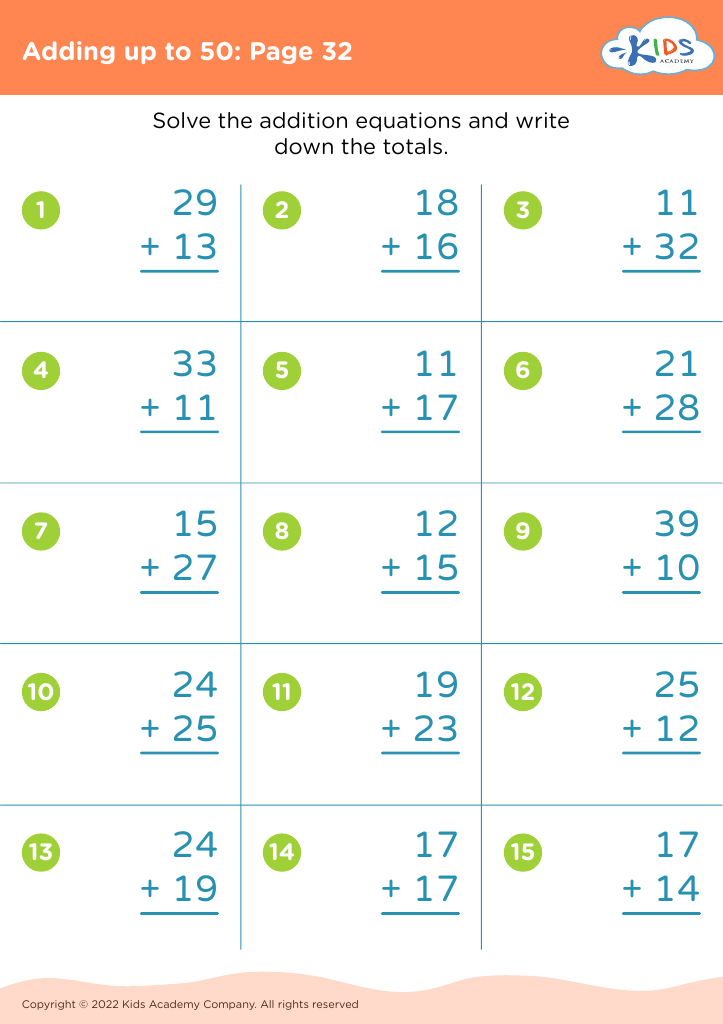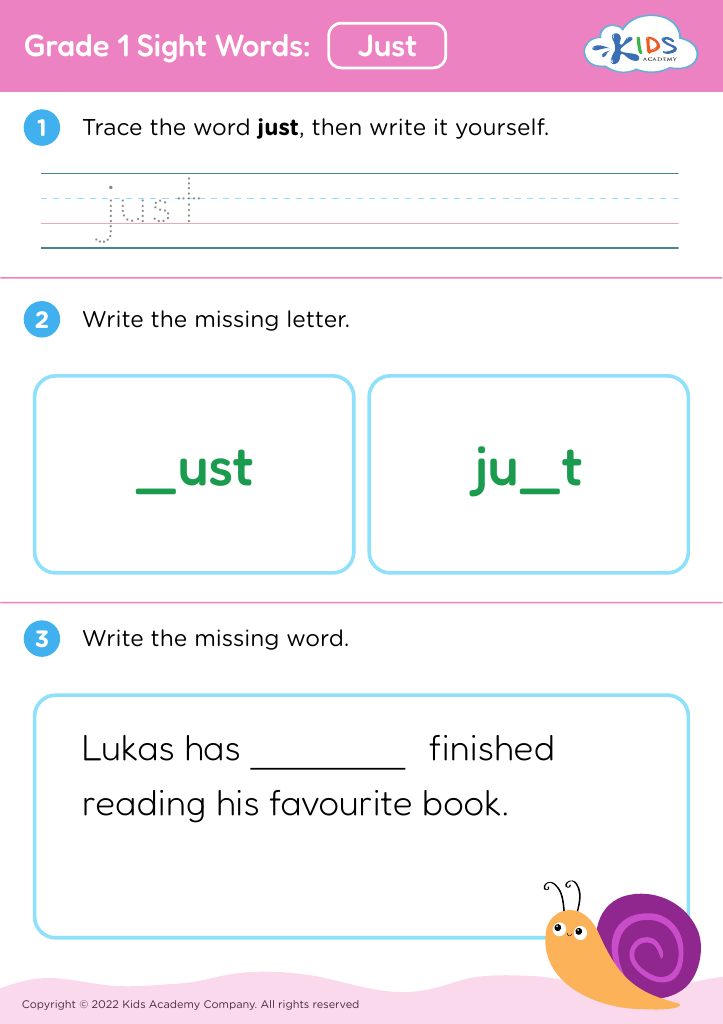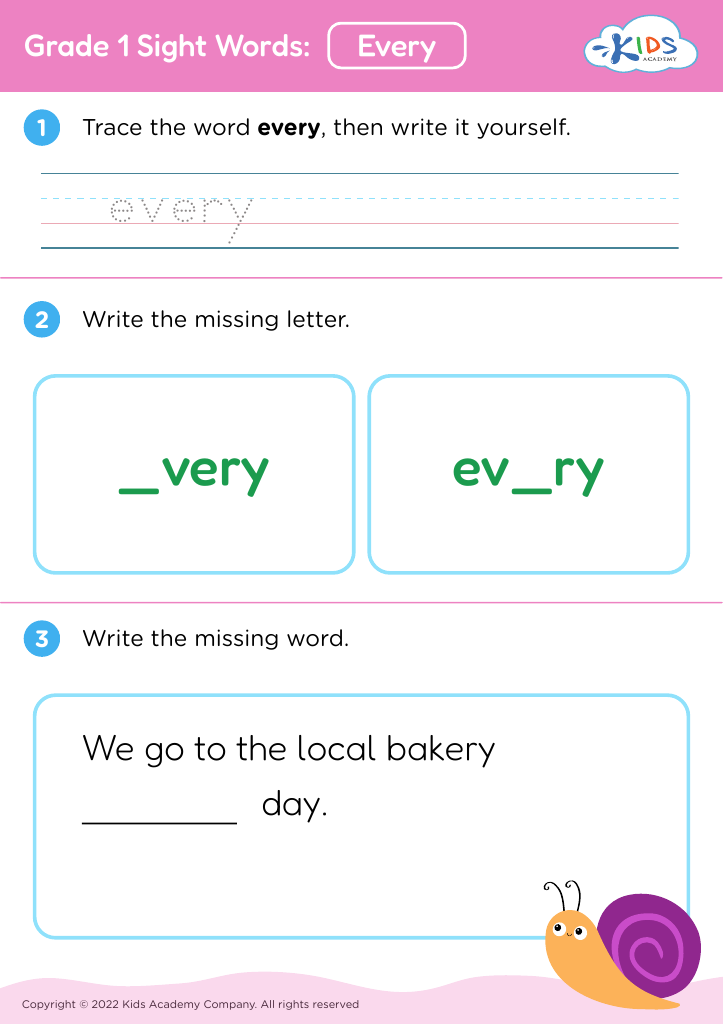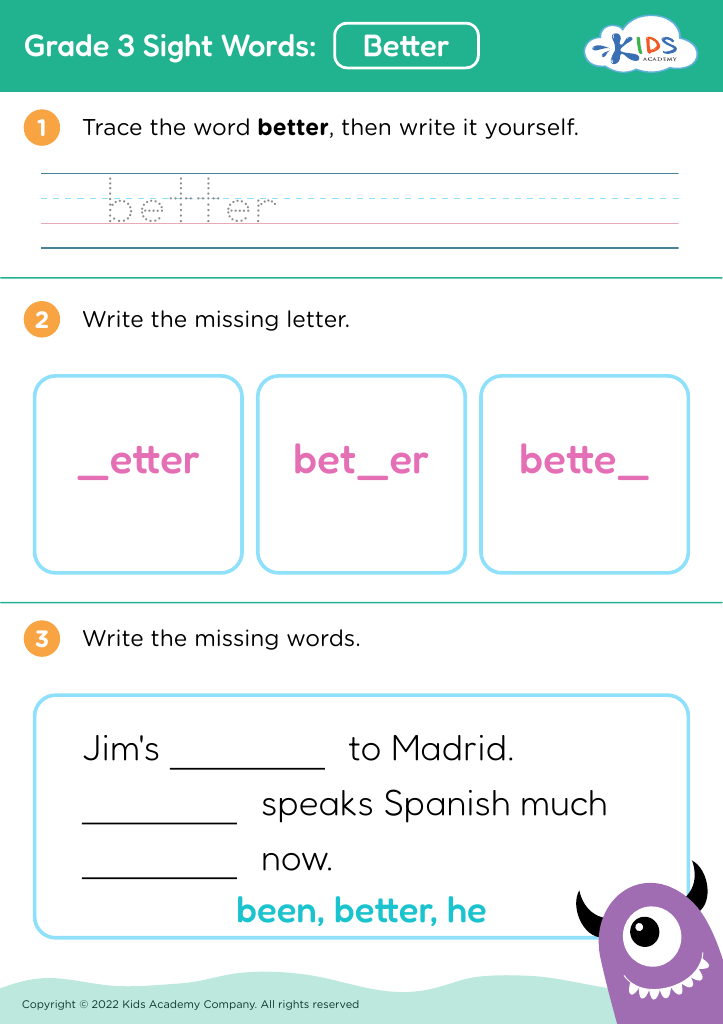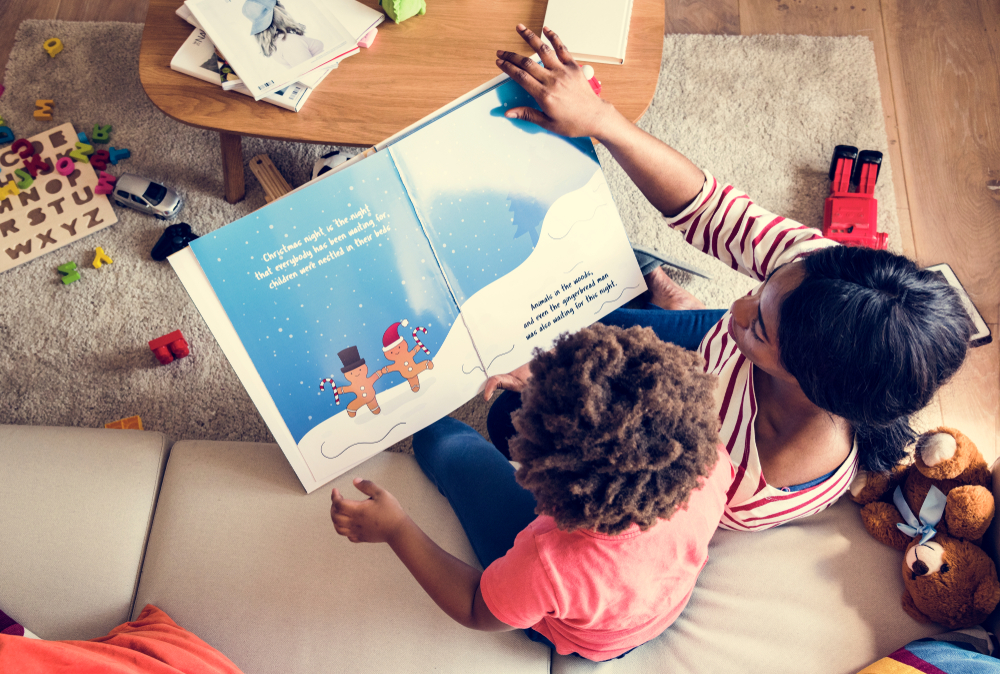Comparing quantities Worksheets for Ages 6-8
15 filtered results
-
From - To
Enhance your child's math skills with our engaging "Comparing Quantities Worksheets" designed for ages 6-8. These worksheets help young learners grasp essential concepts related to comparing and contrasting different amounts. Through fun and interactive activities, children will develop their ability to identify greater or lesser quantities, promoting critical thinking and problem-solving skills. Each worksheet contains colorful illustrations and age-appropriate exercises that make learning enjoyable. Perfect for homeschooling or classroom use, these resources are aimed at building a strong foundation in math. Discover a variety of worksheets to inspire your child's confidence and competence in comparing quantities today!


Which Has More? Size Worksheet


Comparing Number Representations Worksheet


Fruit Math: Picture Graphs Worksheet
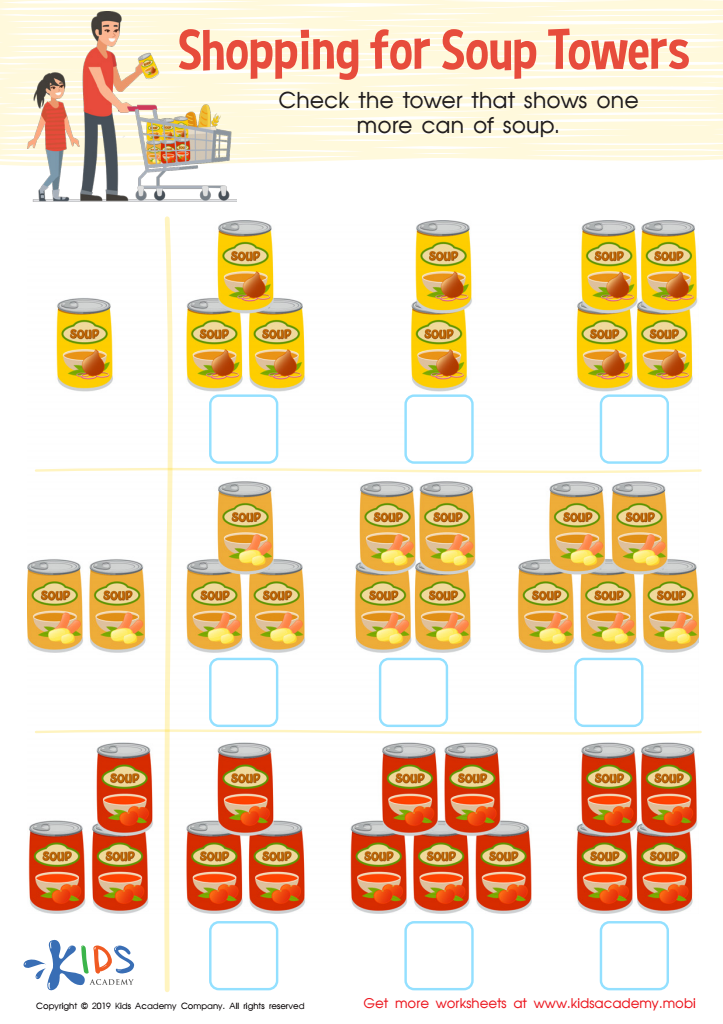

Soup Towers Worksheet
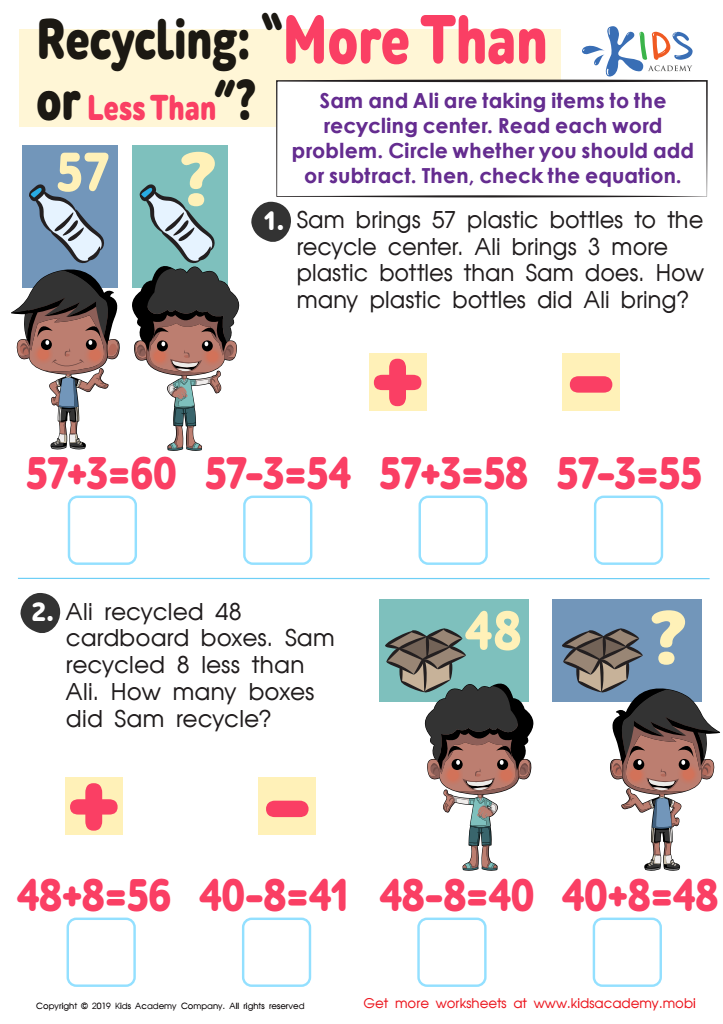

Recycling - More or Less Worksheet
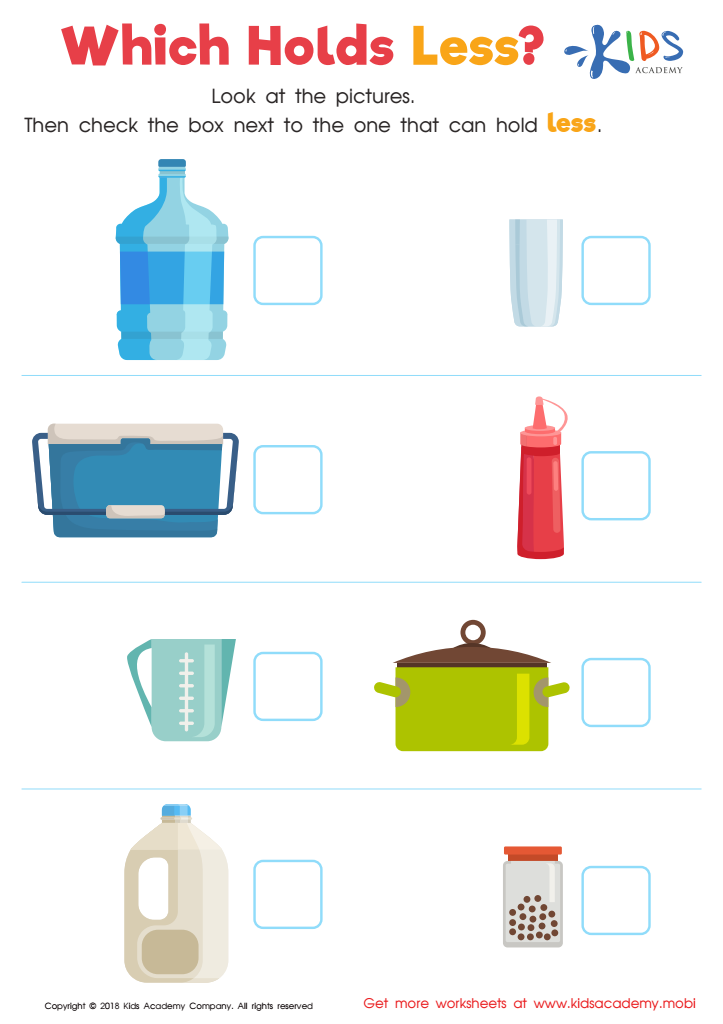

Which Holds Less? Worksheet
Comparing quantities is a fundamental mathematical skill that plays a crucial role in early childhood development, specifically for children aged 6-8. Understanding how to compare quantities helps children build a strong foundation in mathematics, fostering their ability to reason logically, solve problems, and make informed decisions.
At this age, comparing quantities enhances critical thinking skills as children learn to recognize differences, identify patterns, and draw conclusions based on numerical information. When parents and teachers engage children in activities that involve comparing quantities—be it through counting objects, measuring distances, or comparing sizes—they automatically boost their confidence with numbers and quantitative reasoning.
Moreover, these skills are not only applicable within the classroom; they are essential for everyday life. Children will encounter situations requiring the comparison of quantities, such as sharing snacks or determining which toy has more pieces. By prioritizing this skill, educators and parents help prepare children for future mathematical concepts, making the learning experience enjoyable and relevant.
Ultimately, investing time in teaching children how to compare quantities sets the stage for lifelong problem-solving abilities, promotes a love for learning, and equips students to navigate the world around them effectively.
 Assign to My Students
Assign to My Students

